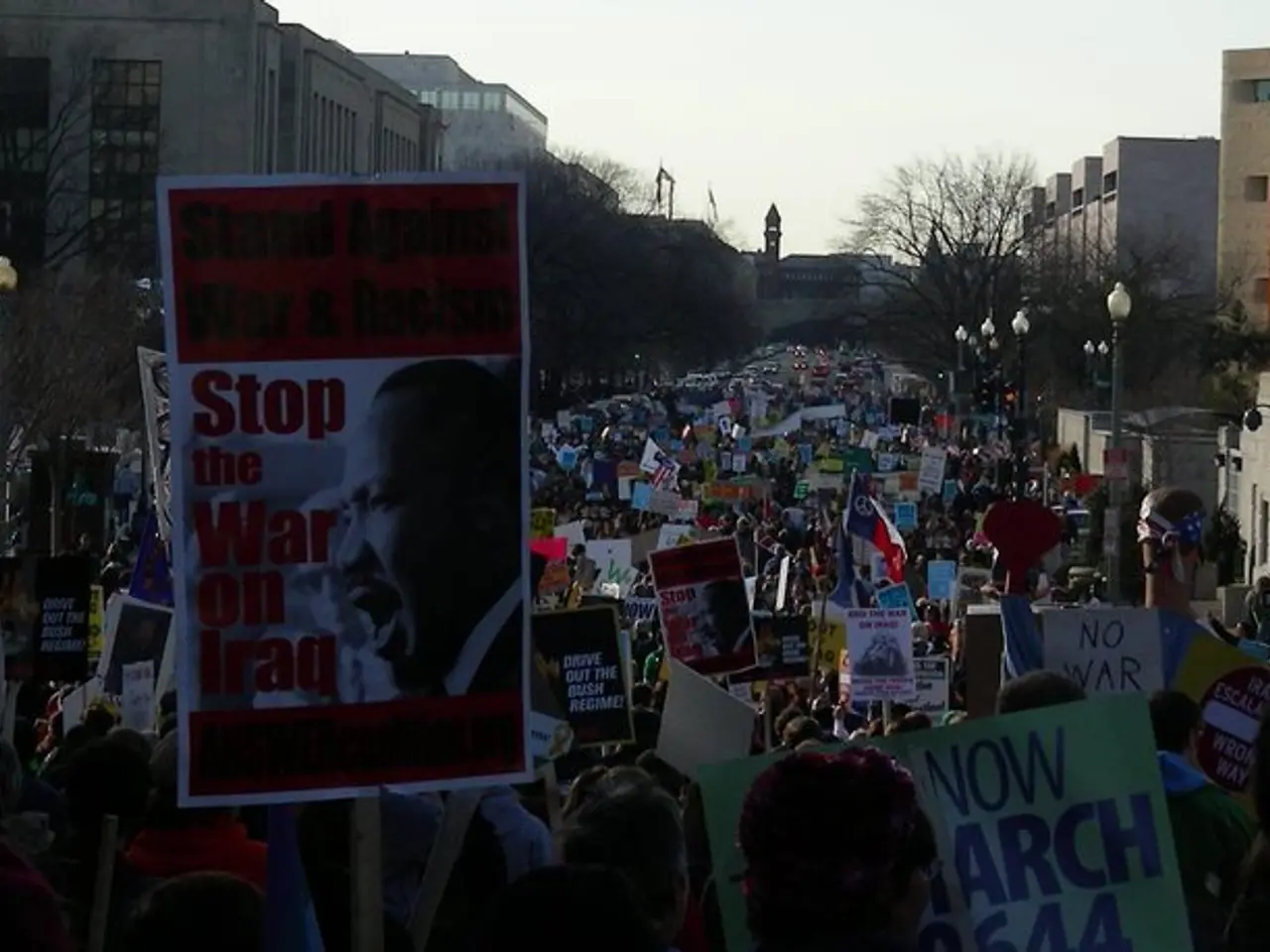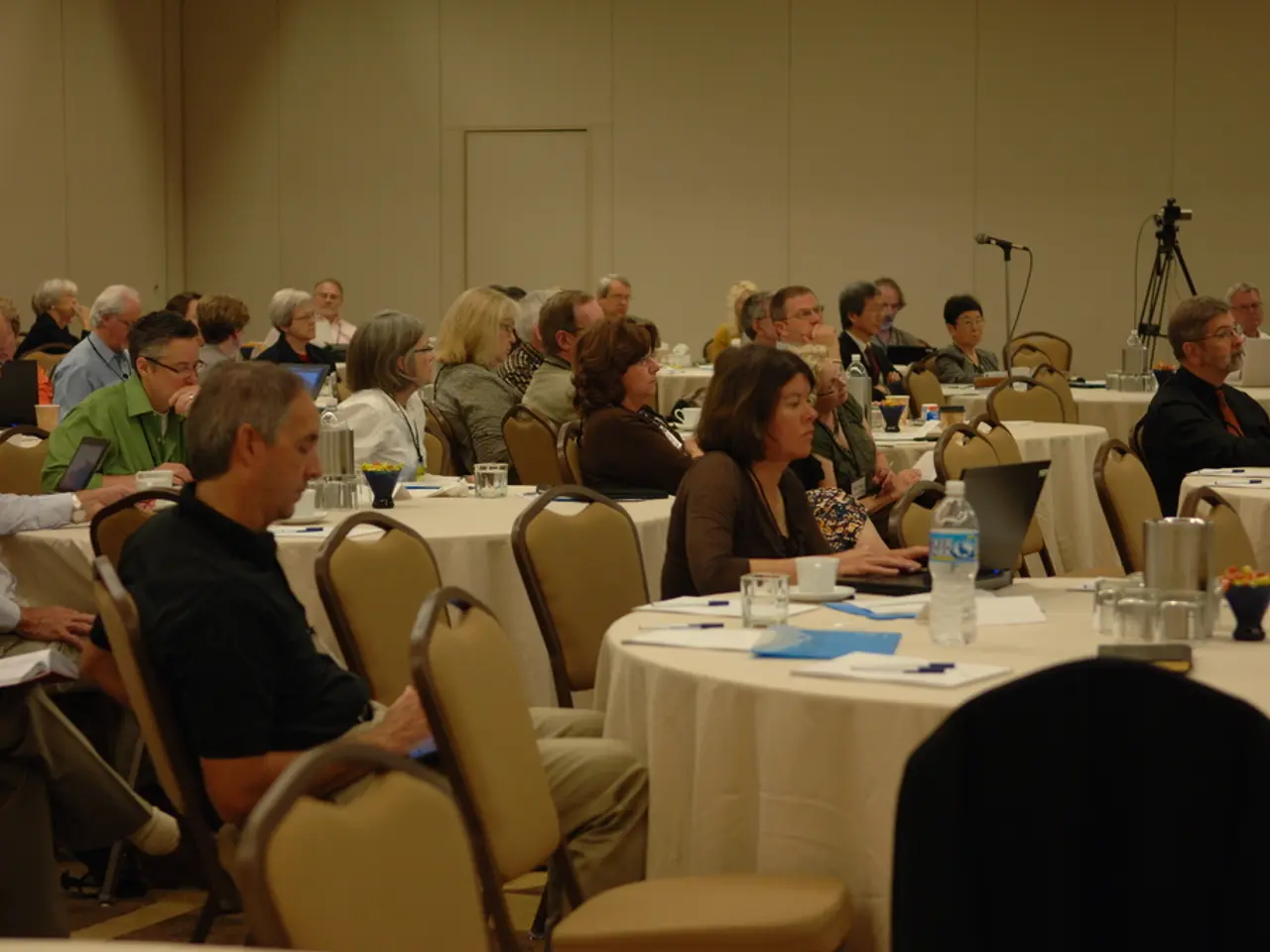Organizing a Protest: A Practical Guide for Southern Heritage Preservationists
In a groundbreaking initiative, the nonprofit organization Invisible Histories has produced a comprehensive guide titled "How to Archive a Protest: A Field Guide For Southern Memory Workers." This guide aims to empower community activists and memory workers by adapting archiving methods during protests, creating resilient, distributed archives that combine both online and offline elements.
The guide emphasizes the importance of digital tools in creating resilient, distributed archives that resist erasure by governments or traditional media censorship. This includes leveraging social media and digital platforms like Twitter, Facebook, Instagram, and newer networks to capture and share protest moments in real-time. Tweets, videos, images, and hashtags form a permanent, publicly accessible record that survives beyond any single platform or account shutdown.
Screenshots and re-uploads of social media content help build decentralized archives of resistance, while user-generated raw video footage documenting events like police violence provides visceral, undeniable evidence that counters state propaganda and creates an emotional, collective memory among communities.
The guide also stresses the importance of bridging the digital-physical divide by combining online campaigns with offline events and guerrilla archiving efforts to shape public narratives and influence broader audiences.
Culturally and historically informed archival practices are another key aspect, drawing on lessons from past movements to build relational, reciprocal networks of memory work. This ensures sustained care and transmission of knowledge across generations.
Ethical, sensitive research and documentation approaches are also crucial, respecting activist safety and anonymity, using purposive and snowball sampling to gather testimonies and stories in risky environments.
Key principles for activists and memory workers include prioritizing digital redundancy and decentralization, combining visual, audio, and textual documentation, fostering intergenerational dialogue, safeguarding participants' safety and privacy, and using creative, accessible tools and collaborative platforms.
The guide encourages users to take what's useful and throw away the rest, and to be creative and resourceful in their approach to archiving. After the protest, materials should be sorted and labeled, and copies of press or media coverage should be saved.
The guide is focused on helping community activists, organizers, cultural workers, and memory workers who are directly involved in a cause. It aims to make often inaccessible and out-of-touch tools and techniques from the fields of archiving and history more accessible for folks on the ground.
A group debrief session is suggested to help label and describe photos, videos, and gathered materials. A designated time and location are suggested for people to donate signs and materials after the protest. Grouping signatures on a protest sign or banner is suggested as a fun and easy archiving activity.
During the protest, the guide recommends advertising and communicating with participants to gather materials. Labeling items as soon as they are received is encouraged, with information such as the name of the donor, what the object is, and where it was received.
Overall, adapting archiving during protests means creating living, distributed archives that capture the complexity, emotion, and persistence of movements through both digital innovation and grounded community relationships. This empowers activists to shape history rather than have it shaped for them.
- The guide produced by Invisible Histories, "How to Archive a Protest," advocates for the use of digital tools to establish resilient and distributed archives, utilizing platforms like Twitter, Facebook, Instagram, and newer networks.
- By capturing and sharing protest moments in real-time via social media, a permanent record can be formed that stands beyond any single platform or account deactivation.
- The guide emphasizes the need to bridge the digital-physical divide, integrating online campaigns with offline events and guerrilla archiving to impact public narratives and broader audiences.
- Culturally and historically informed archival practices are critical, referencing past movement lessons to construct relational, reciprocal memory networks for continued knowledge transmission across generations.
- Respecting activist safety and anonymity with ethical, sensitive research and documentation methods is a cornerstone of the guide's approach.
- Key principles for activists and memory workers include prioritizing digital backup and decentralization, combining visual, audio, and textual documentation, fostering intergenerational dialogue, safeguarding participants' safety and privacy, and using creative, user-friendly tools and collaborative platforms.
- After the protest, materials should be sorted and labeled, and copies of press or media coverage should be preserved for future reference.
- The guide is designed to support community activists, organizers, cultural workers, and memory workers who are actively engaged in a cause, making once exclusive and distant archiving and history techniques more accessible for grassroots activists.
- A group debrief session is recommended to label and describe photos, videos, and gathered materials, while advertising and communicating with participants during the protest to gather materials is also advised.




